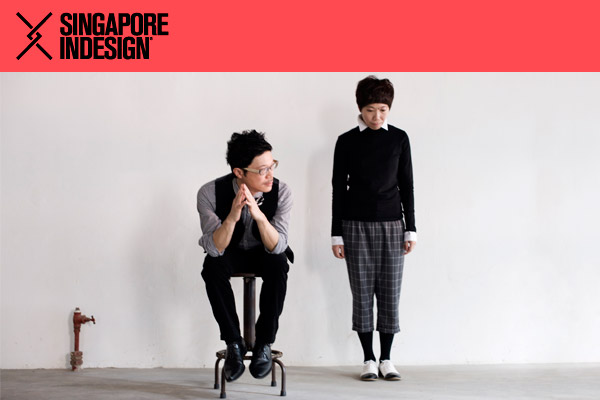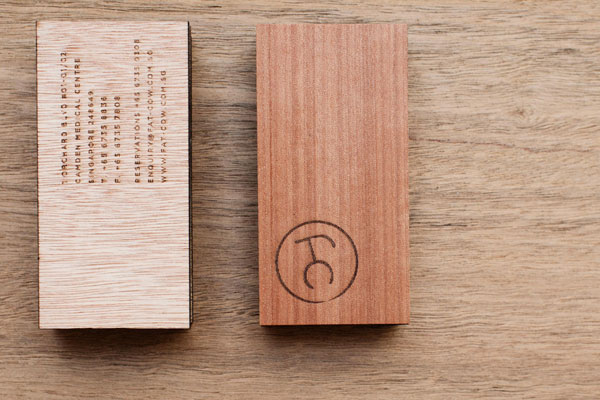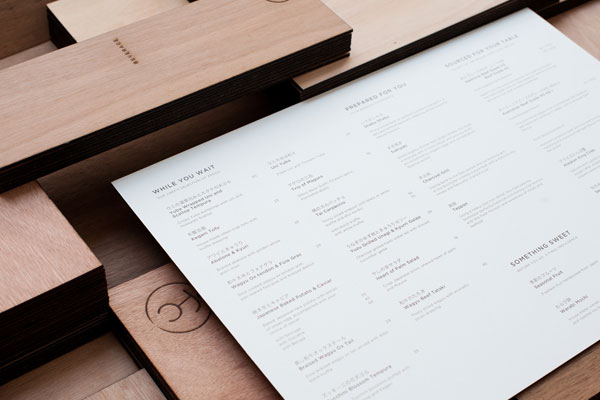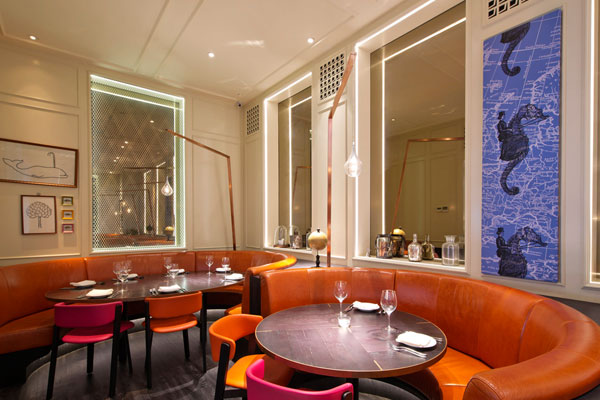True to its name, Foreign Policy Design Group believes in thorough research to produce sensitive yet assertive work, writes Iliyas Ong.

August 4th, 2014
Top image: (left) Arthur Chin (right) Yah-Leng Yu

The Fat Cow project, Singapore
Yah-Leng Yu got the name for her design studio from a dream. The creative director had dreamt about news typography and woke up remembering the words “Foreign Policy”. Christening the practice she co-founded as Foreign Policy Design Group was then a straightforward decision. “It made absolute sense and gelled terrifically with our philosophy to be constantly engaged in a broader spectrum and not just stay with a static point of view,” Yu recalls.

The Fat Cow project, Singapore
Yu founded the firm with Arthur Chin in 2007, after the pair had spent seven years running a studio in New York City. Throughout Foreign Policy’s work in graphic design, branding, spatial design and digital strategy, Yu and Chin believe in using ideas to drive projects. In fact, the co-founders reveal that they spend most of their time understanding their clients’ problems and needs. They even encourage their designers to work “off their computers, because the real world is much bigger than pixels”. Call it design diplomacy.

The architecture of the Sifang Art Museum in Nanjing, China formed the inspiration for the client’s collateral work
“Design should be experienced,” Chin, also a creative director, says. “And we’d like that experience to be deeper and memorable. We do a lot of research, we read and we dig, so as to become experts on the subject matter. Then it’s easier to brainstorm. Only with knowledge will creativity collide with facts to become ideas.”
For instance, in designing the collateral for the Sifang Art Museum in Nanjing, China, Foreign Policy used the “gentle terrain” of the region and the “harsh angularity” of the building’s architecture as sources of inspiration. So business cards, envelopes and other material adopt a trapezoidal form while the Chinese type used is inspired by bamboo – a balance between demureness and masculinity, according to the studio.
“At Foreign Policy, we try not to develop a ‘signature style’,” explains Yu. “We focus on developing a solution set that works for our client. As our clients are in different businesses with different needs, our style becomes dictated by what would improve our clients’ business.”
That isn’t to say the studio doesn’t have its own language. Its projects, many of which are for F&B clients, are sharp, savvy and always a little curious. From the Japanese steakhouse The Fat Cow’s wooden, wabi sabi-inspired menu to the bizarro nautical motifs in the interiors of gastro-pub The Pelican, Foreign Policy isn’t afraid to be bold.

The Pelican project, Singapore
Yu and Chin position their studio as part of what they term a “design renaissance” in Singapore. According to them, the design industry in the city used to be dominated by ad agencies. But around the late-noughties, this changed. “A couple of other design studios started around the same time as us and have been putting out really good work,” Chin notes. “The next wave of small studios has also popped up, and it’s just really heartwarming to see the community grow.”

The Pelican project, Singapore
The thriving design scene also makes events such as Singapore Indesign – Yu and Chin are Design Ambassadors – vital. “We like that there are events where local designers are invited to make something, whether art or furniture, and present them. It brings the industry together, and I think it’s really important to have a gathering platform where like-minded people meet, discuss and exchange ideas,” says Yu.

The Pelican project, Singapore
Foreign Policy Design Group
foreignpolicydesign.com
A searchable and comprehensive guide for specifying leading products and their suppliers
Keep up to date with the latest and greatest from our industry BFF's!

In the pursuit of an uplifting synergy between the inner world and the surrounding environment, internationally acclaimed Interior Architect and Designer Lorena Gaxiola transform the vibration of the auspicious number ‘8’ into mesmerising artistry alongside the Feltex design team, brought to you by GH Commercial.

Channelling the enchanting ambience of the Caffè Greco in Rome, Budapest’s historic Gerbeaud, and Grossi Florentino in Melbourne, Ross Didier’s new collection evokes the designer’s affinity for café experience, while delivering refined seating for contemporary hospitality interiors.

Marylou Cafaro’s first trendjournal sparked a powerful, decades-long movement in joinery designs and finishes which eventually saw Australian design develop its independence and characteristic style. Now, polytec offers all-new insights into the future of Australian design.

Coordination Asia’s design for the Kids Museum of Glass 2.0 in Shanghai is a sophisticated scheme that appeals to both young and old.
The internet never sleeps! Here's the stuff you might have missed

A school in India, designed by Vijay Gupta Architects, showcases the importance of the natural world by engaging and educating the young.

Savage Design’s approach to understanding the relationship between design concepts and user experience, particularly with metalwork, transcends traditional boundaries, blending timeless craftsmanship with digital innovation to create enduring elegance in objects, furnishings, and door furniture.